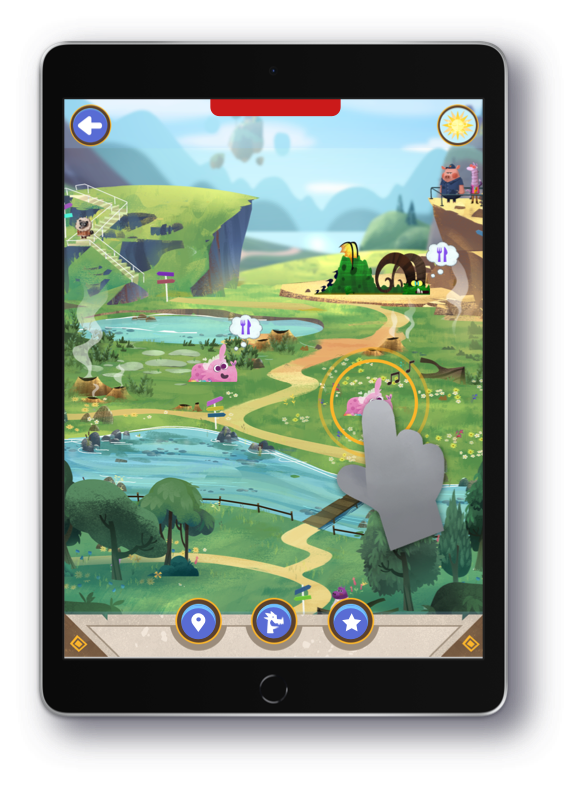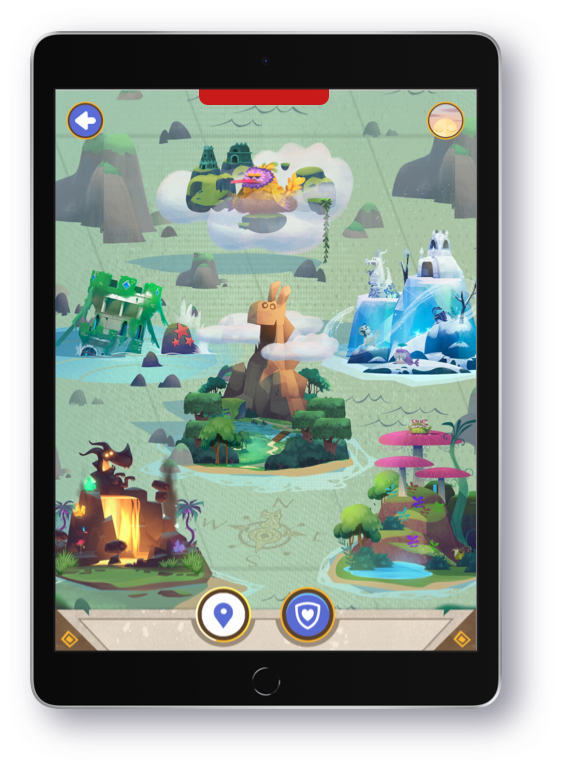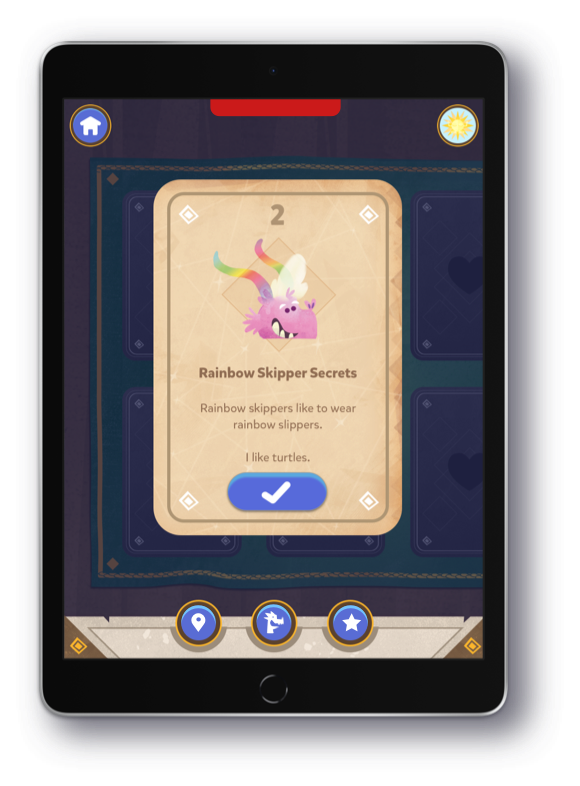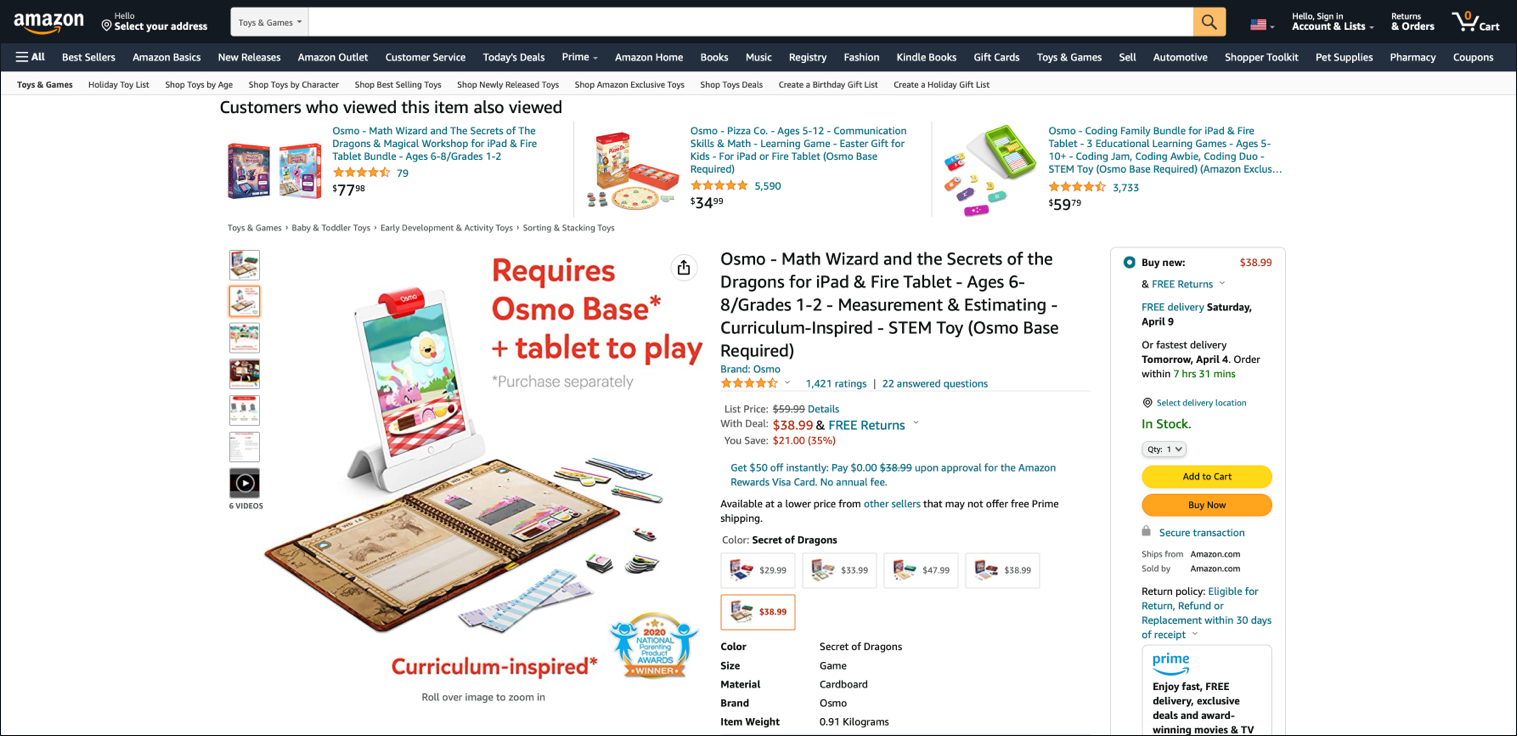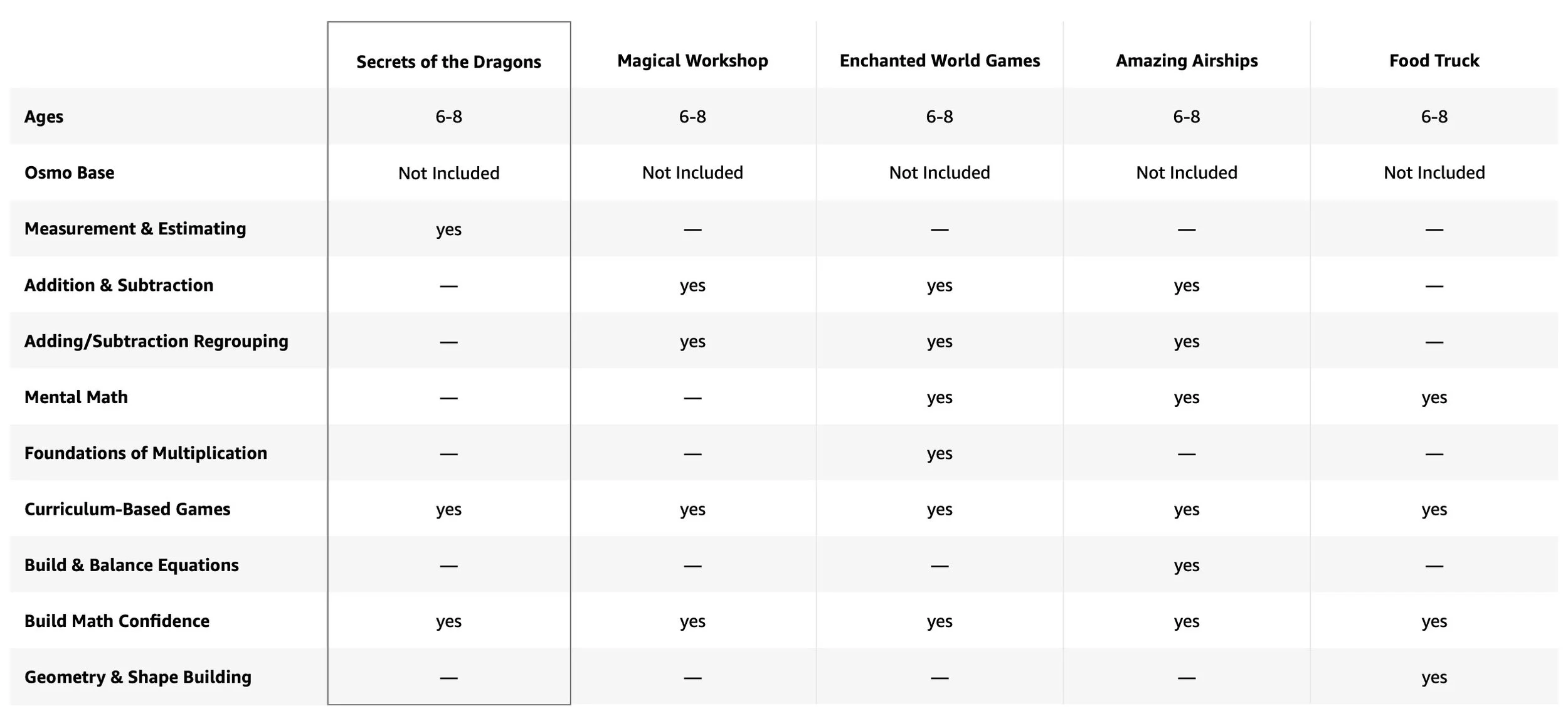
Math Wizard: Secrets of the Dragons
Osmo specializes in hands-on learning games for kids, using real world objects to interact with a digital world on iOS and Android tablet devices. Osmo’s products promote embodied learning appropriate for ages between 3 to 12 by connecting abstract concepts to objects and actions in the real world.
Explore an immersive world filled with dragons where kids take on the role of a park ranger to discover and engage in curriculum inspired math learning.
Skills: UX, Wireframes, Prototype, Hardware Design, Visual Design, Marketing
Role: Lead Designer
Introduction
I joined the Math Wizard team as a lead designer on the Secrets of the Dragons box. Supported by a talented and multi-disciplinary team, together we strived to create a Math Series that incorporates early math concepts that meet widely accepted Common Core Standards.
Business Goals
From a business perspective, the development of the Math Wizard series proved to be something parents were looking for, especially during shelter in place. At the time, schooling was a widely unknown factor, and there was a need to fulfill the request for more supplemental educational products.
Additionally, it supported the other buisness goal of establishing a product line that can grow with the user.
Target Audience
Even though the product is primarily for kids in the 1st and 2nd grade, it’s important that parents find value from the math boxes. Although, designing a product that is engaging for all ages and a variety of education levels is vital, we valued creating a safe environment where kids are able to learn without the pressures that often comes with learning. Mirroring education in school, kids should feel encouraged and supported to do well.
Challenges
While Osmo has had much success developing engaging learning products for young audiences, this was the first time a learning box was built to meet curriculum standards.
1. Curriculum Standards
The problems need to cover the common core standards for 1st and 2nd grade.
2. Machine Learning
Vision detection for a new type of point and hold interaction.
3. Competition
Environmental factors competing for an older kid’s attention and time.
Development
The early production included wireframing, prototyping and heavy weekly testing both internally and externally with our target audience and their parents. We tested early data, including vision detection. There was a strict hardware deadline, so it was important for the vision engineers to get the necessary data to propery detect the hardware components of the Math Wizard boxes.
Brainstorm
Whiteboarding with the team and product owners to throw ideas on the board. After a few lengthy discussions, we landed on the core gameplay mechanics and themes to develop.
Product Flow Chart
The main experience consists of two of the following components: exploration and learning. Kids are immersed in a world of dragons and are brought on a wonderful journey filled with colorful discovery challenged by estimation and measuring problems.
Common Core Standards
The core interactions need to effectively teach the concept of estimation and comparison using rulers and units of measure.
To have a better understanding of what common core standards are, it can be summarized as math and writing concepts that students should understand and be able to do at the end of each grade. The standards range from K - 12th grade and are widely accepted in the United States.
Grade 1
Measure lengths indirectly and by iterating length units.
CCSS.MATH.CONTENT.1.MD.A.1
Order three objects by length; compare the lengths of two objects indirectly by using a third object.
CCSS.MATH.CONTENT.1.MD.A.2
Express the length of an object as a whole number of length units, by laying multiple copies of a shorter object (the length unit) end to end; understand that the length measurement of an object is the number of same-size length units that span it with no gaps or overlaps. Limit to contexts where the object being measured is spanned by a whole number of length units with no gaps or overlaps.
Grade 2
Measure and estimate lengths in standard units.
CCSS.MATH.CONTENT.2.MD.A.1
Measure the length of an object by selecting and using appropriate tools such as rulers, yardsticks, meter sticks, and measuring tapes.
CCSS.MATH.CONTENT.2.MD.A.2
Measure the length of an object twice, using length units of different lengths for the two measurements; describe how the two measurements relate to the size of the unit chosen.
CCSS.MATH.CONTENT.2.MD.A.3
Estimate lengths using units of inches, feet, centimeters, and meters.
CCSS.MATH.CONTENT.2.MD.A.4
Measure to determine how much longer one object is than another, expressing the length difference in terms of a standard length unit.
CCSS.MATH.CONTENT.2.MD.B.6
Represent whole numbers as lengths from 0 on a number line diagram with equally spaced points corresponding to the numbers 0, 1, 2, and represent whole-number sums and differences within 100 on a number line diagram.
Usability Testing
Through a combination of weekly remote playtesting with parents and kids between ages 6 - 9, we tested our early designs and interactions. This also proved to be an ideal time to gauge the reactions of the kids and their preferences.
After each playtesting, combined with our observations and questionnaire at the end of each session, we compiled the issues and learnings to share with the rest of the team. A few of the common themes are below..
Vision Detection
We are restricted by the device camera, so alignment is very important for accuracy.
Gaps & Overlaps
The standards state that problem solutions not have gaps or overlaps.
Measurement
It’s important for kids to line up the ruler correctly in order to arrive at the correct answer.
Occlusion
Often times, kids tend to block the hardware with their hands.
Clarity
During testing, kids needed a lot of help. We need an intervention help system.
Reading Difficulties
We needed to incorporate support for kids who weren’t as strong readers.
Tutorial
We learned kids sometimes needed help at the very beginning. The Math Wizard series is heavily supported with tutorials and intervention systems to help kids towards the correct solutions without giving them the answer. We wanted to create a supportive environment where kids have the freedom to explore and a safe space to make mistakes.
Exploration
To create a engaging experience, we wrapped the learning concepts within a magical dragon world filled with immersive environments and delightful discoveries. This experience should not feel like school work.
Merit Badges
The collection feature encourages kids to complete the challenges and engage with the different features. It’s important for kids to learn through practice and repetition of the early math concepts.
During playtests, we discovered some kids were highly engaged with collection and were hyper focused on earning the next badge.
Dragon Facts
To encourage kids to further exploring and provide another opportunity for additional reading, each dragon has fun facts to discover.
Core Interactions
As a learning application, it’s important to create an accessible platform that supports kids with different levels of reading and accessibility needs.
The intervention system is reactive to the player’s actions, and only appears when certain incorrect movements are made. The help prompts are supported by audio, visual and written instructions.
Measuring Intervention System
Using vision technology to detect a pointing finger was a new type of interaction that has never been done at Osmo. People are unique - they come in all shapes, sizes, and skin tones.
There was a lot of technical aspects, but working closely with Vision Engineers, I created a reactive intervention system where kids learn how to point and hold their finger on the page. We validated our designs through vision data and weekly tests with live users.
Estimation Intervention System
To cover the topic of estimation and comparison. We introduced a variety of comparison problems to cover different dragon food preferences. Dragons can consume foods that are about the width of their body. These intervention prompts solved the issue of the gaps and overlaps during early testing.
Immersive Environment
The Math Series shouldn’t feel like an extension of school. It is meant to be exciting and magical. Built in Unity, I created a few animated particle effects to add ambience in the dragon biomes. Also, add looping animations and shaders to give the make the environment and world feel more alive and exciting to explore.
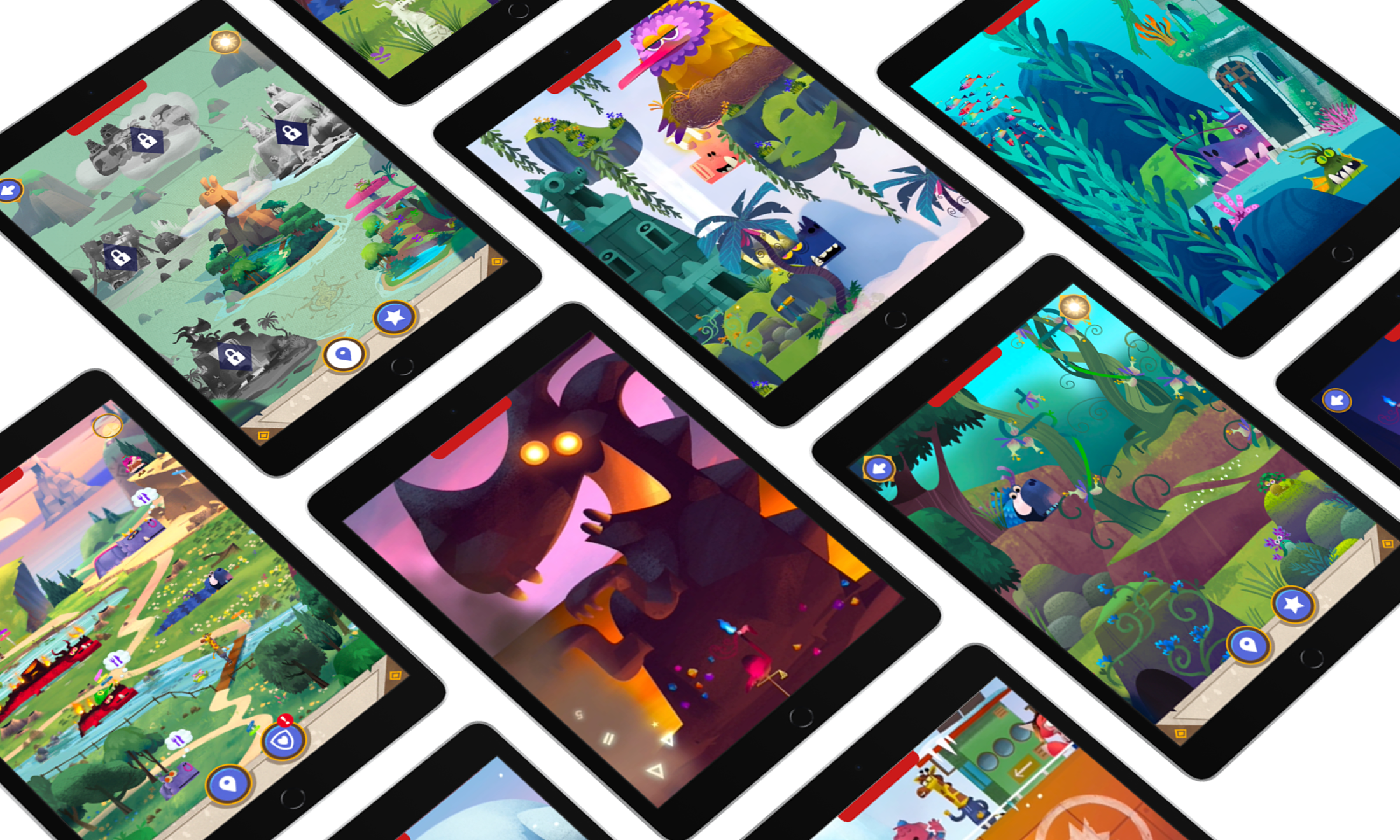
Global Launch
Setup with a warehouse supply of hardware boxes, a polished software build, and exciting marketing campaigns, we proceeded to launch globally on both the Osmo and Amazon websites.
Positive Reviews
Negative Reviews
Software Update
We went into global launch with the expectation of a post launch software update to address any concerns. The reviews fell under two general categories. None of these were surprising. The first concern was game difficulty. This was a topic that was discussed prior, so there was plans in place to address it. Parents were concerned that the game was not difficult enough for their child. The second concern was stability. This was also a topic that did not surprise us as we had plans to do optimization for Fire tablets.
A difficulty adjustment in the settings menu allows parents the ability to select the level appropriate for their child.
Next Steps
The first two flagship Math Wizard titles were successful, so we decided to launch additional boxes to cover a wider range of subjects and common core standards.
Comparison of curriculum standards of each box.




